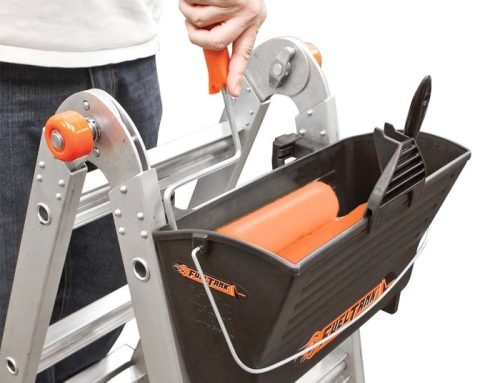For many of us wooden ladders are a thing of the past, nice to use for interior decoration, or for putting in a museum, but not for actually using. It may not be the easiest thing to find a new wooden ladder, but there are some manufacturers out there still making them. Wooden or timber ladders are ideal for electrical work as they are non-conductive, and they're environmentally friendly, lasting for decades with proper care, and can be used for firewood or home décor projects when their useful life is over.
There's still a small but persistent market for timber ladders and the Health and Safety Executive recognises that they are especially useful for electrical work, and they don't advise against the use of wooden ladders. BS 1129 is designed to cover wooden ladders, and it should be noted that this safety standard refers to the dimensions and grade of timber used, rather than being a sign of rigorous testing; large companies may prefer to use tested aluminium ladders for on-site safety reasons but contractors and the self-employed may choose to use a timber ladder for electrical work or in situations where a metal ladder could be dangerous (for example, when there are a lot of overhead cables).
The market for new timber ladders is shrinking, however, and one of the oldest ladder firms in Canada recently closed the doors on their wooden ladder manufacture, as it is simply not profitable any longer. Allright Ladders has been operating in Vancouver for over a century, and while they do make metal ladders and will continue to do so, they're stopping production of timber ladders. The warning signs have been apparent since 2009, when the global economic crisis saw every industry tightening their belts and reducing stock levels and new purchases. Now, production is at just 20% of pre-2008 levels and therefore, can't be continued. Other factors include rising rents and the rise in popularity of ladders made from metal and fibreglass, have led to the last wooden ladder manufacturer in Canada taking the decision to focus exclusively on the areas of their business that do still make financial sense.
There are a small number of companies in the UK and Europe making wooden ladders, and across Africa and Asia the cheapness of wooden ladders compared to expensive imports means timber ladders are often the best option, especially for remote communities. The origins of the ladder are from Africa, initially, where ladders made from a single branch or tree trunk (with footholds carved out on either side) were used to access cave dwellings. The ease with which anyone can build a wooden ladder means they will be used in developing countries for many years to come.
Wood is still a popular material for loft ladders, so there will continue to be a demand for sectional wooden ladders for loft access. As time goes on we could see these phased out in favour of metal concertina style loft ladders which can be operated by a remote control – convenience drives innovation and this could see the total demise of the wooden ladder. When developing countries can access metal ladders more easily than making their own, this will contribute further to the collapse of the wooden ladder market, although there is one notable advantage to using wooden ladders in hot countries – you won't burn your hands on a hot metal ladder!
If you have an old wooden ladder lurking in your shed then you can continue to use it if it is in good shape, but we'd recommend getting creative with it, and investing in a newer, all-purpose ladder for every job around the home.






Leave A Comment
You must be logged in to post a comment.